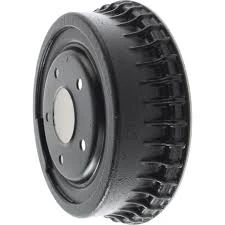
-
 Afrikaans
Afrikaans -
 Albanian
Albanian -
 Amharic
Amharic -
 Arabic
Arabic -
 Armenian
Armenian -
 Azerbaijani
Azerbaijani -
 Basque
Basque -
 Belarusian
Belarusian -
 Bengali
Bengali -
 Bosnian
Bosnian -
 Bulgarian
Bulgarian -
 Catalan
Catalan -
 Cebuano
Cebuano -
 Corsican
Corsican -
 Croatian
Croatian -
 Czech
Czech -
 Danish
Danish -
 Dutch
Dutch -
 English
English -
 Esperanto
Esperanto -
 Estonian
Estonian -
 Finnish
Finnish -
 French
French -
 Frisian
Frisian -
 Galician
Galician -
 Georgian
Georgian -
 German
German -
 Greek
Greek -
 Gujarati
Gujarati -
 Haitian Creole
Haitian Creole -
 hausa
hausa -
 hawaiian
hawaiian -
 Hebrew
Hebrew -
 Hindi
Hindi -
 Miao
Miao -
 Hungarian
Hungarian -
 Icelandic
Icelandic -
 igbo
igbo -
 Indonesian
Indonesian -
 irish
irish -
 Italian
Italian -
 Japanese
Japanese -
 Javanese
Javanese -
 Kannada
Kannada -
 kazakh
kazakh -
 Khmer
Khmer -
 Rwandese
Rwandese -
 Korean
Korean -
 Kurdish
Kurdish -
 Kyrgyz
Kyrgyz -
 Lao
Lao -
 Latin
Latin -
 Latvian
Latvian -
 Lithuanian
Lithuanian -
 Luxembourgish
Luxembourgish -
 Macedonian
Macedonian -
 Malgashi
Malgashi -
 Malay
Malay -
 Malayalam
Malayalam -
 Maltese
Maltese -
 Maori
Maori -
 Marathi
Marathi -
 Mongolian
Mongolian -
 Myanmar
Myanmar -
 Nepali
Nepali -
 Norwegian
Norwegian -
 Norwegian
Norwegian -
 Occitan
Occitan -
 Pashto
Pashto -
 Persian
Persian -
 Polish
Polish -
 Portuguese
Portuguese -
 Punjabi
Punjabi -
 Romanian
Romanian -
 Russian
Russian -
 Samoan
Samoan -
 Scottish Gaelic
Scottish Gaelic -
 Serbian
Serbian -
 Sesotho
Sesotho -
 Shona
Shona -
 Sindhi
Sindhi -
 Sinhala
Sinhala -
 Slovak
Slovak -
 Slovenian
Slovenian -
 Somali
Somali -
 Spanish
Spanish -
 Sundanese
Sundanese -
 Swahili
Swahili -
 Swedish
Swedish -
 Tagalog
Tagalog -
 Tajik
Tajik -
 Tamil
Tamil -
 Tatar
Tatar -
 Telugu
Telugu -
 Thai
Thai -
 Turkish
Turkish -
 Turkmen
Turkmen -
 Ukrainian
Ukrainian -
 Urdu
Urdu -
 Uighur
Uighur -
 Uzbek
Uzbek -
 Vietnamese
Vietnamese -
 Welsh
Welsh -
 Bantu
Bantu -
 Yiddish
Yiddish -
 Yoruba
Yoruba -
 Zulu
Zulu
leading and trailing shoe drum brake
Leading and Trailing Shoe Drum Brakes An Overview
Drum brakes are one of the oldest types of braking systems used in vehicles, and they continue to play an essential role in automotive safety and performance. Among the various designs of drum brakes, the leading and trailing shoe configuration is especially significant. This article explores the mechanics behind leading and trailing shoe drum brakes, their advantages, and their applications.
At the core of the leading and trailing shoe design is the arrangement of the brake shoes inside the drum. In a typical drum brake system, two shoes are positioned against the inner surface of a cylindrical drum. One shoe is termed the leading shoe, while the other is referred to as the trailing shoe. The primary difference between these two is their interaction with the drum during braking.
When the brakes are applied, the shoes expand outward against the drum's inner surface. The leading shoe makes initial contact with the drum in the direction of wheel rotation. As a result, it experiences a greater force due to the rotation of the drum, which effectively increases the friction and aids in braking. On the other hand, the trailing shoe applies less force compared to the leading shoe, which means it has a more passive role during braking. This configuration helps to distribute braking forces effectively, enhancing the overall efficiency of the system.
leading and trailing shoe drum brake

One of the main advantages of leading and trailing shoe drum brakes is their self-energizing effect. This self-energizing feature allows the leading shoe to pull the trailing shoe into contact with the drum as the leading shoe is forced against the drum. This mechanism leads to better braking performance with less pedal effort, making it both efficient and user-friendly.
Additionally, leading and trailing drum brakes provide excellent heat dissipation, which is vital during prolonged braking scenarios. The drum's large surface area allows for effective cooling, reducing the likelihood of brake fade, a condition where brakes lose efficiency due to excessive heat buildup. This quality makes leading and trailing shoe drum brakes particularly advantageous for heavy vehicles and in conditions where frequent braking is required.
However, it is important to note that while leading and trailing shoe drum brakes offer numerous benefits, they also come with certain limitations. For example, they can be more complicated to adjust and maintain compared to disc brake systems. Furthermore, the development of modern braking systems, such as anti-lock braking systems (ABS) and electronic brake-force distribution, has led to the gradual decreasing use of drum brakes in favor of more advanced technologies.
In conclusion, leading and trailing shoe drum brakes remain a fundamental technology in the field of automotive braking systems. Their unique design and operational efficiency have made them suitable for a wide range of vehicles, particularly those requiring robust braking capabilities under demanding conditions. While newer technologies continue to evolve, the enduring legacy of leading and trailing shoe drum brakes emphasizes their critical role in ensuring safety and reliability on the road. Understanding these systems provides valuable insights into brake design and vehicle dynamics, paving the way for further innovations in automotive engineering.
-
What Are Drum BrakesNewsJul.07,2025
-
Understanding Brake Drum MaterialNewsJul.07,2025
-
Semi-Trailer Brake Drum: A Key Component for Extreme Loads and Long-Distance TransportNewsJul.07,2025
-
Drum Brake Pads for SaleNewsJul.07,2025
-
Brake Drums for SaleNewsJul.07,2025
-
Brake Drum ManufacturerNewsJul.07,2025
-
Aluminum Brake Drums: The Future of High-Performance CarsNewsJul.07,2025
